Museums transforming themselves into open-air cinemas, theaters, concert arenas, or taking their activities outdoors to parks and gardens, or creating special guided tour programs. The post-Covid summer of museums is about reinvention, broadening views, contamination, and interaction between various art forms.It is true that many museums are still suffering, with closed halls, reduced hours, no audience, and in several cases have not even reopened. But it is good to see that there are also museums that are raising their heads and responding by trying new forms of audience engagement. Covid-19 amplified the gaps between some museums and others, but it also acted as an accelerator of trends and pushed many directors and organizers to think of best practices to avoid losing the trust and affection of the public. And in several cases, true virtuous circles have been created, with the public coming closer to the museum through special events or programs and perhaps returning to it in the future. Good practices, moreover, apply indiscriminately to public and private museums, large museums and smaller ones: if the right conditions and ideas are in place, audiences can come even when the going gets tough.
The journey can start in Tuscany, and in particular in Prato, where the region’s most-visited contemporary art museum, the Pecci Center, is based: the institution, in 2018, was celebrating its 30th birthday and for the occasion had launched a summer concert program, Pecci Summer Live. Twenty days of good music in the museum’s open-air theater, which were a great success (thanks also to the presence of artists of national and international appeal), so much so that it led the museum to lengthen the duration of the festival in 2019 (from twenty days to forty), and in this “virus summer” to intensify the dates. Thus, the six concerts of 2018 and 2019 became ten this year, with still big names (from Dente to Bugo, from Ghemon to Gio Evan). But it’s not over: for 2020 Pecci’s Summer Live is part of a larger program, Pecci Summer, which lasts all summer long (from June 29 to September 6) and which combines concerts with Pecci Summer Cinema, a rich film festival that transforms the museum into a large open-air hall, Pecci Summer Talk (i.e., the program of meetings, presentations, and lectures), DJ-set sessions, and this year also a temporary garden designed by the EC�?L architects’ collective that divides the cinema area from the concert area with a totally new environment and brings a... piece of beach to the city. And all, of course, while complying with health and medical requirements: the capacity of the spaces has been reduced and there is scrupulous vigilance over compliance with the regulations we have all learned by now. With the result that museums are currently the safest places to go.
“Our challenge,” Pecci Center director Cristiana Perrella told Finestre sull’Arte, "has been to enhance the usual activities and open ourselves more and more to the city and to different audiences, in terms of age and interests, in full security and economic sustainability. We wanted to make people feel that the Pecci is there in this difficult time, that it is a place that has a lot to offer, that people are comfortable there. That is also why we chose to be free for the whole summer, except for the new Ren Hang exhibition. Alongside the exhibitions and educational activities, all of which have resumed with new proposals, Pecci Summer offers until September a daily program of films, concerts and talks in our open-air space, transformed by the intervention of the Prato-based architecture collective EC�?L. The public has responded well, the concerts are all sold out, the educational projects too, and the museum can be said to be busier than before." An outstanding result these days.
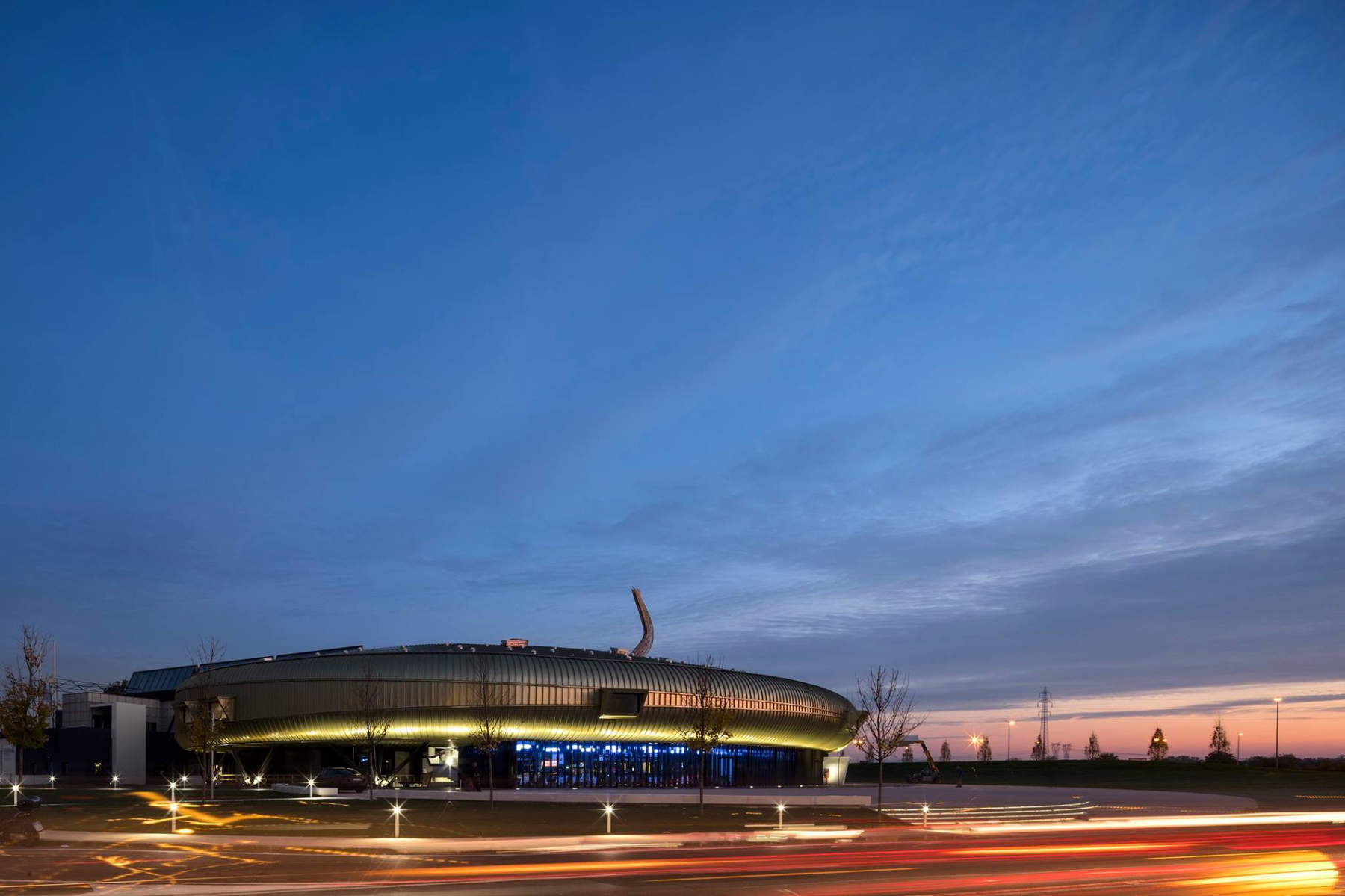 |
| The Pecci Center in Prato |
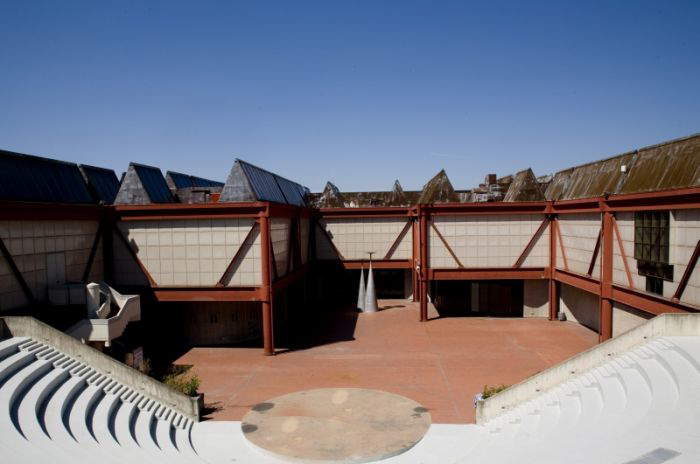 |
| The Pecci Theater, home of Pecci Summer Live |
Cinema unites many museums, from the north to the south of the peninsula. In one of the cities hardest hit by Covid-19, Brescia, the Brescia Musei Foundation, in addition to extending the visiting hours of its civic museums (the Santa Giulia Museum and the Pinacoteca Tosio Martinengo), is once again this year proposing a highly successful event, L’Eden d’estate, the outdoor cinema schedule that this year moves from the Bastioni di San Marco to the Fossa Viscontea, offering as many as 59 evenings with titles from the recently concluded film season. A journey of hundreds of kilometers takes us to Messina, where the MuMe, the largest museum in the South, offers the public a program of cinema under the stars throughout July and August, set up on the terrace of the Regional Museum, and the screenings are also combined with an aperitif. From terrace to terrace, it’s back to Tuscany, where at the Villa Bardini in Florence, for example, the Fondazione CR Firenze and the Fondazione Parchi Monumentali Bardini e Peyron have decided to transform, for the first time, the museum’s Belvedere Terrace into an open-air cinema with a view of Florence: it is “the most beautiful in the world,” say many Florentines and some journalists. But there is more than just the cinema: still in the Tuscan capital, the Museo Novecento has instead decided to transform itself into a theater. From July 2 to October 2, three months of performances, classical music concerts, readings, lectures and more, in this case under the banner of free. The program is titled 100/900 and has adapted for the occasion the cloister and loggia of the museum, which is housed in the Spedale delle Leopoldine in Piazza Santa Maria Novella, to allow it to seat up to 100 people. There is, moreover, talk of events that create interesting connections with the territory and with the collection: there is, for example, a project entitled Reading Pratolini, all about Vasco Pratolini, and which aims to enhance the museum’s collection (the Florentine writer is put in ideal dialogue with Ottone Rosai: an entire room in the museum is dedicated to the latter and his Florentine paintings), and there is also a program of lectures dedicated to the protagonists of the collection (from Carlo Carrà to Felice Casorati, from Carlo Levi to Arturo Martini).
“In the sign of variety and contamination of languages and disciplines,” museum director Sergio Risaliti told us, “we make the most of the versatility of the museum spaces. The cloister and internal loggia lend themselves well to theatrical and musical events, lectio and book presentations. We are one of the few entities in Italy to demonstrate cultural courage and sustainable finance, which are needed more than ever today. The reading Pratolini project wants to be a poetic mapping of the city of Florence as it was, of the anthropological and social transformations, without forgetting that it is an experience of enhancing the young actors of the company I Nuovi for a project born in collaboration with Fondazione Teatro della Toscana.”
Something similar is happening in Reggio Emilia, where the Palazzo Magnani Foundation and the Municipality of Reggio Emilia, with the Restate 2020 program, are bringing, from July to September, a packed program of art, music, dance, poetry, cinema and theater to the Chiostri di San Pietro (intended for dance, theater and music), to the parterre of the Reggia di Rivalta (where part of the theater program is held) and to the Orti di Santa Caterina, reserved instead for jazz and poetry. A review with top names: from Flavia Mastrella and Antonio Rezza to Paolo Fresu, from Cristina Donà to Davide Cabassi, and then opera and classical music.
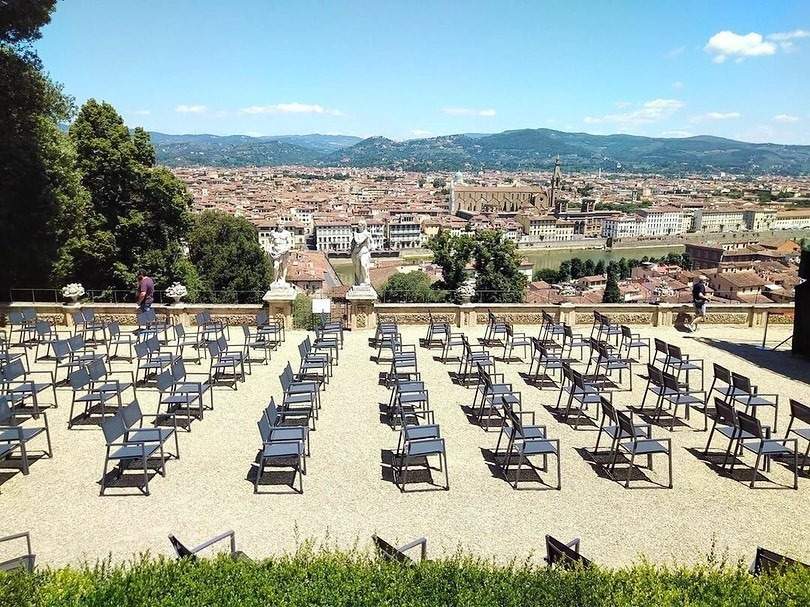 |
| The open-air cinema of Villa Bardini’s Belvedere Terrace. |
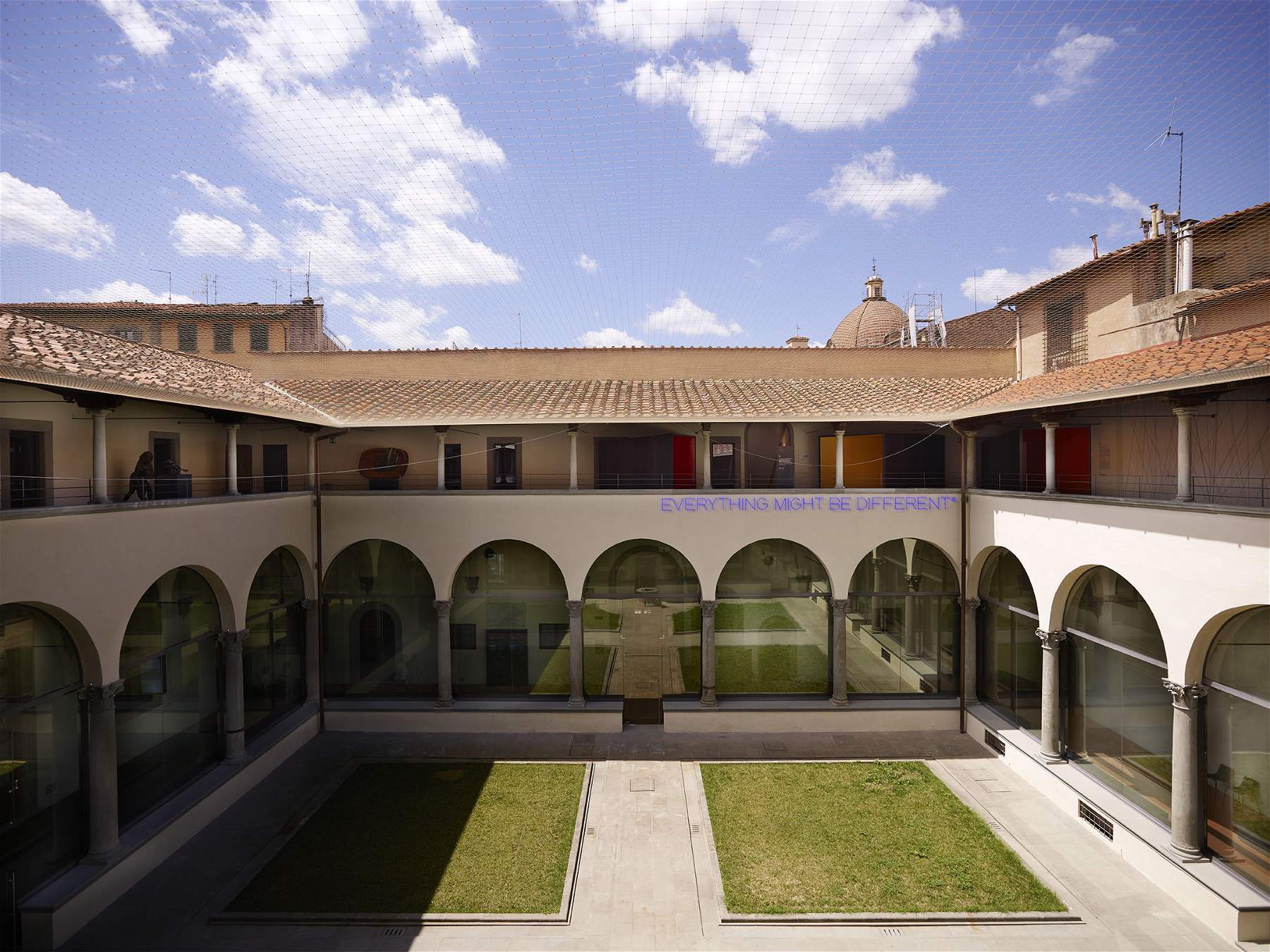 |
| The cloister of the Novecento Museum in Florence |
 |
| The first classical music concert of 2020 at the Chiostri di San Pietro in Reggio Emilia |
One of the constants this summer is to take art out of the museum: because it does not necessarily have to remain confined within its walls; on the contrary, outings are often healthy, if done judiciously, and allow the scope of its action to be broadened, sometimes exponentially, and always reaching an audience that may not have been aware of the institution’s activities before. So from Emilia we move on to Lombardy, to one of the cities-symbols of the Covid-19 pandemic, Bergamo, where GAMeC, the Galleria d’Arte Moderna e Contemporanea in the city of Orobica, is closed this summer until October 1, but it is not standing still, and is offering a small extra muros program: until July 30, the Education Through Art project has brought an exhibition of video art works to Carrara Square, and then there is Daniel Buren’s installation at Palazzo della Ragione and the children’s campus The Museum is present organized together with Accademia Carrara.
Of course, museums that have outdoor spaces are facilitated in these public encounter operations. So here, in Piedmont, the Royal Museums of Turin offer different ways to get in touch with the institution on weekends. For example, the Welcome Green experience offers botanical tours to learn more about the floral and plant essences found in the Royal Gardens, and the Acquarello Garden workshop allows people to familiarize themselves with the watercolor technique by trying to depict the beautiful outdoor spaces of the Gardens. But there are also aperitifs with DJ sets, the inevitable open-air cinema hosted in the Court of Honor of the Royal Palace, and dinners under the portico of the Court itself offered at a special price by Caffè Reale Torino, the royal museums’ cafeteria.
In Trieste, the Historical Museum-Park of Miramare Castle offers a new service to the public, guided tours of the museum and park (those in the park are, moreover, a novelty) by guides from the Friuli Venezia Giulia Tourist Guide Association: the novelty lies in the fact that these are individual guided tours (the maximum number allowed is five people), which are held every weekend, in the afternoon, and last one hour, at a cost of only 7 euros in addition to the entrance fee (12 euros that also allow a visit to the important exhibition on photography by Marcello Dudovich and the focus on photography and optical instruments at the time of Maximilian of Habsburg, the archduke of Austria who had the castle built). Here, the proposal came from the association of guides, and the museum immediately jumped at the opportunity to initiate a valuable synergy to extend the possibilities of enjoying the museum’s spaces: the goal is to give visitors the chance to learn about curiosities and new perspectives on the museum and park. “We were among the first to open the Park to the public,” Park Director Andreina Contessa told us, “because we strongly believe in the therapeutic value and beauty of Green Museums. During the months of lockdown, we initiated and put to good use contacts with major local cultural institutions so that they could give continuity to their programs in order to bring to life an evening and daytime summer schedule for the youngest visitors, combining the beauty of Miramare’s open spaces and the experience in event production of theaters and associations. The result was a playbill full of quality proposals and magical atmospheres, and a beautiful collaboration with the most prestigious regional cultural institutions and associations, e.g., Teatro Stabile Rossetti, Il Teatro Verdi di Pordenone, the Società dei Concerti and others, was initiated, which may continue to develop in the future. So far the audience response has been one of great and satisfied adherence to each evening. We have also invested heavily in getting to the opening of the exhibition dedicated to Marcello Dudovich at the Scuderie del Castello, despite the difficulties and numerous unknowns. This is a truly fascinating and eagerly awaited exhibition that explores the relationship between the photograph, the sketch and the finished work of one of the first publicists and famous poster artists of the 20th century.”
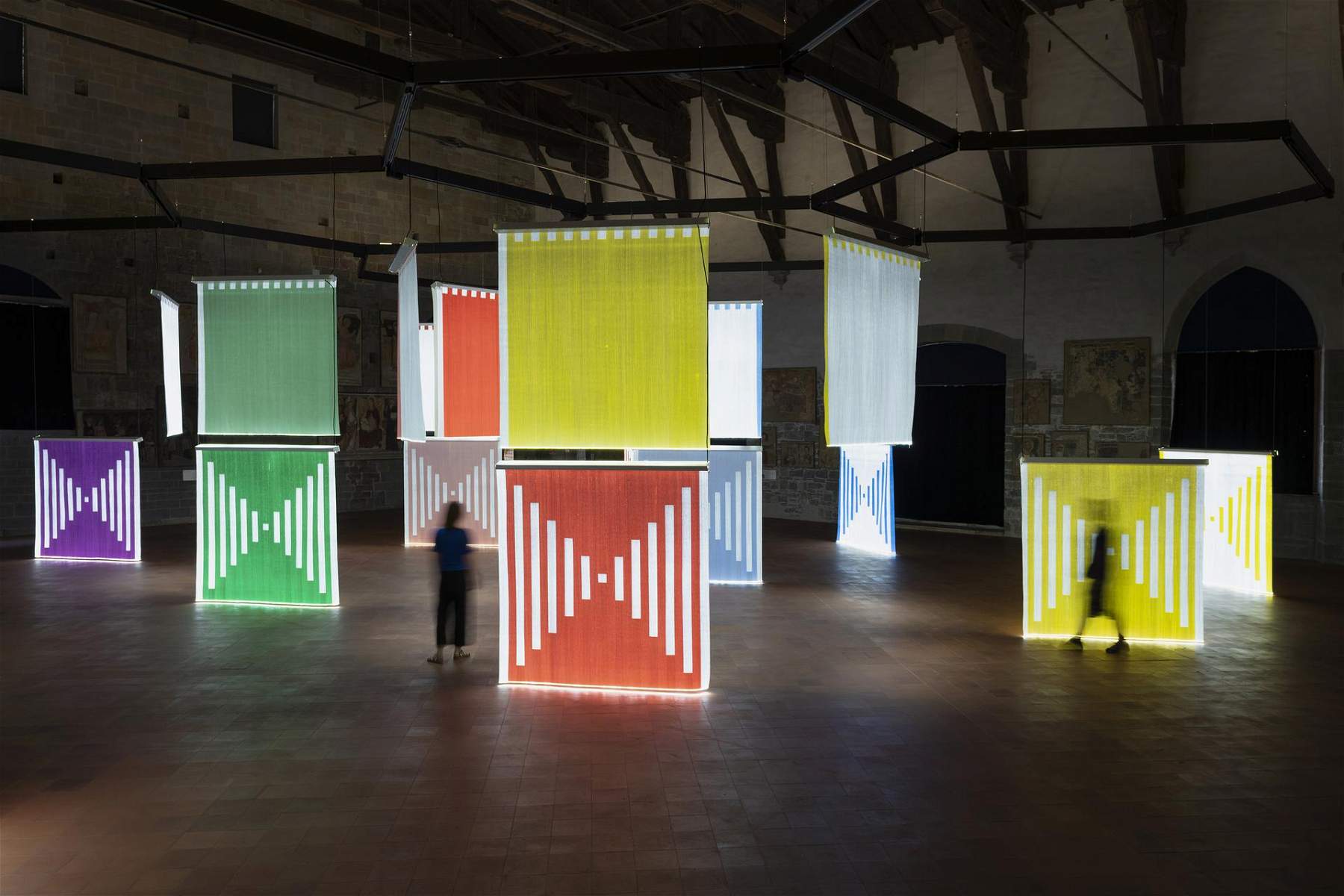 |
| Daniel Buren, Fibres optiques tissées, installation view at the exhibition Illuminare lo spazio, lavori in situ e situati, GAMeC, Palazzo della Ragione, Bergamo, 2013 - 2020. Photo by Lorenzo Palmieri |
 |
| The Royal Gardens of Turin |
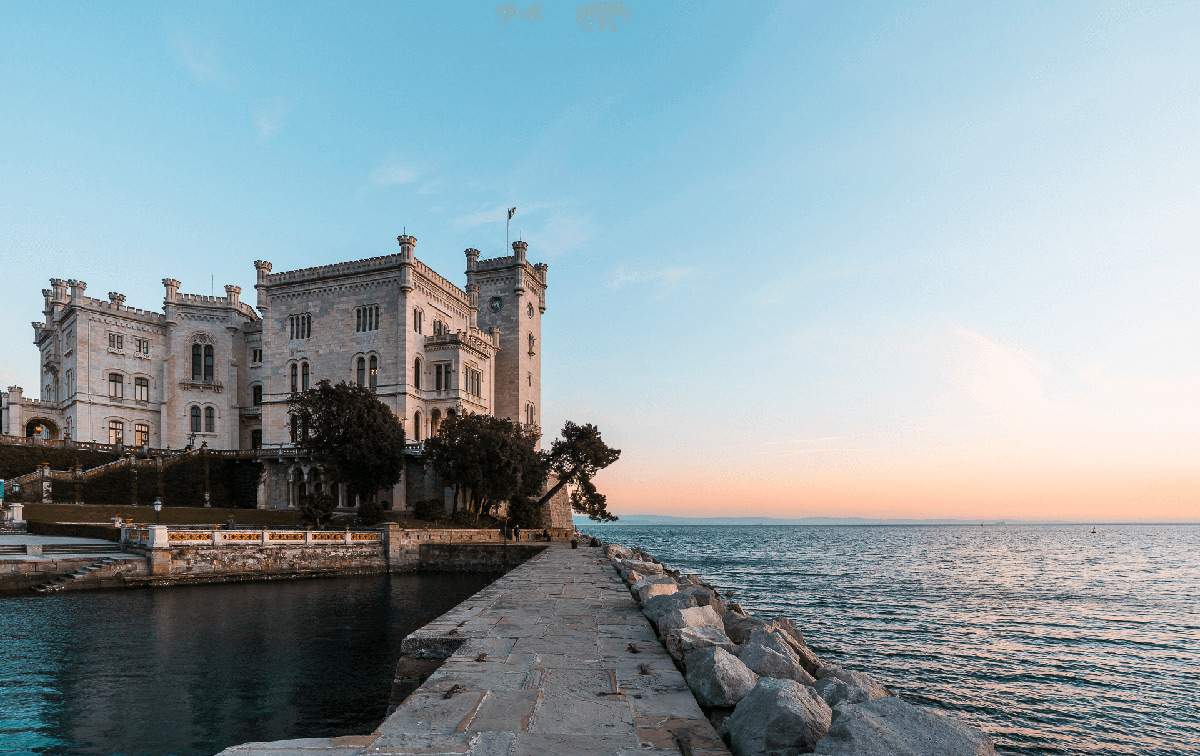 |
| Miramare Castle. Ph. Credit Fabrice Gallina archive PromoTurismoFVG |
And for small museums that do not have large outdoor spaces or the ability to set up cinemas or theaters? There are those who team up with other entities, as is the case in Casalmaggiore, where for several seasons the Diotti Civic Museum has been teaming up with local cultural entities (the Civic Library, the Municipal Theater, associations and foundations) to create an open-air cinema program in the courtyard of the Santa Chiara Institute. But there are also other possibilities, and the path, in this case, is not unlike the one opened by the Miramare Castle: special guided tours, perhaps tailored to the preferences and interests of the public, as suggested by museologist Sandro Debono in his “recipes” to help museums get back on their feet from the forced closure due to viruses. Several museums throughout Italy are experimenting with this form of public involvement. It’s happening, for example, at the Civic Museums of Imola, where special visits, creative activities and games for children are offered, all in compliance with anti-contagious safety regulations. Among the most interesting initiatives are the guided tours of the Rocca Sforzesca at sunset: two rounds of visits, each week on a different theme, reserved for small groups of visitors (a maximum of twenty people for each round), with the opportunity to learn about the history of the site and to enjoy, at the end of the visit, a rewarding view of the city as the sun disappears behind the horizon. There are also many museums that offer extraordinary out-of-hours openings: still in Romagna, for example, the Municipal Museums offer the public the opportunity to visit them in the evening hours, until 11 p.m., every week, with the possibility of guided tours even after dinner.
Revamped guided tours also at Milan Cathedral, which this summer are offered to the public at a 20 percent discount and with the possibility of staying longer than usual on the Terraces, since the opening has been extended until 8 p.m. Among the returning proposals are the Duomo Tour Fast-Track, a one-and-a-half-hour guided tour of the entire Milan cathedral complex, a walk among the spires, and private tours available in four routes. “A visit to the Duomo of Milan,” the Veneranda Fabbrica del Duomo di Milano tells Finestre Sull’Arte, “is not just a simple experience, but rather a journey to discover art and culture in a country as rich in history and creativity as Italy. Visiting the Duomo today means supporting and being close to an institution that has suffered greatly due to the blockade caused by the health emergency. It means adapting to a new normal. Every day visitors feel protected and at ease with the current anti-county measures, and indeed, the perception is that of a safe and pleasant visit among the wonders and treasures of the Cathedral, a symbol of Milan in the world.”
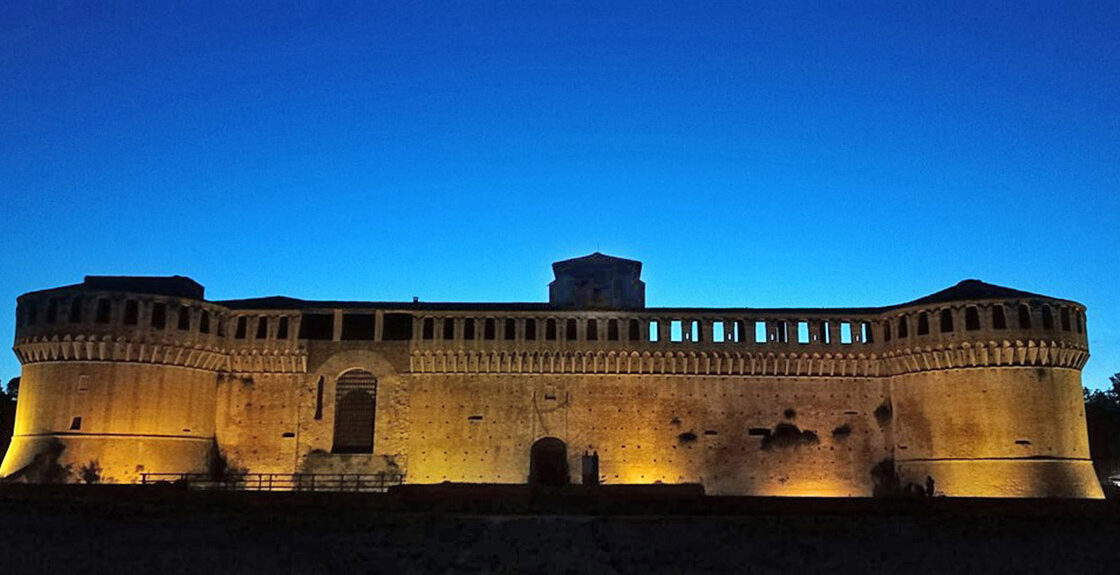 |
| The Rocca Sforzesca of Imola at sunset |
 |
| The spires of the Milan Cathedral |
In a summer when one will have to do without tourists, it is essential to tighten ties with the cities and the territory, and many museums have understood this, some continuing and expanding initiatives that had already met with happy results in previous years, while others are inventing and trying out new proposals. Without preconceptions, and keeping in mind that culture does not work in watertight compartments, but is also made up of transversality: the museums that focus on this concept will most likely be the ones that will be able to come out of the crisis better. And for the public, many more opportunities: not only that of seeing the museum (at events of the rest there are those who open the doors of the collections), but also that of being able to have a different evening, in company, based on cinema, music, theater. These are forms that encourage the return of visitors and affirm even more the central role of the museum in the social life of a community. Just remember that and have the ability to look beyond it.
Warning: the translation into English of the original Italian article was created using automatic tools. We undertake to review all articles, but we do not guarantee the total absence of inaccuracies in the translation due to the program. You can find the original by clicking on the ITA button. If you find any mistake,please contact us.